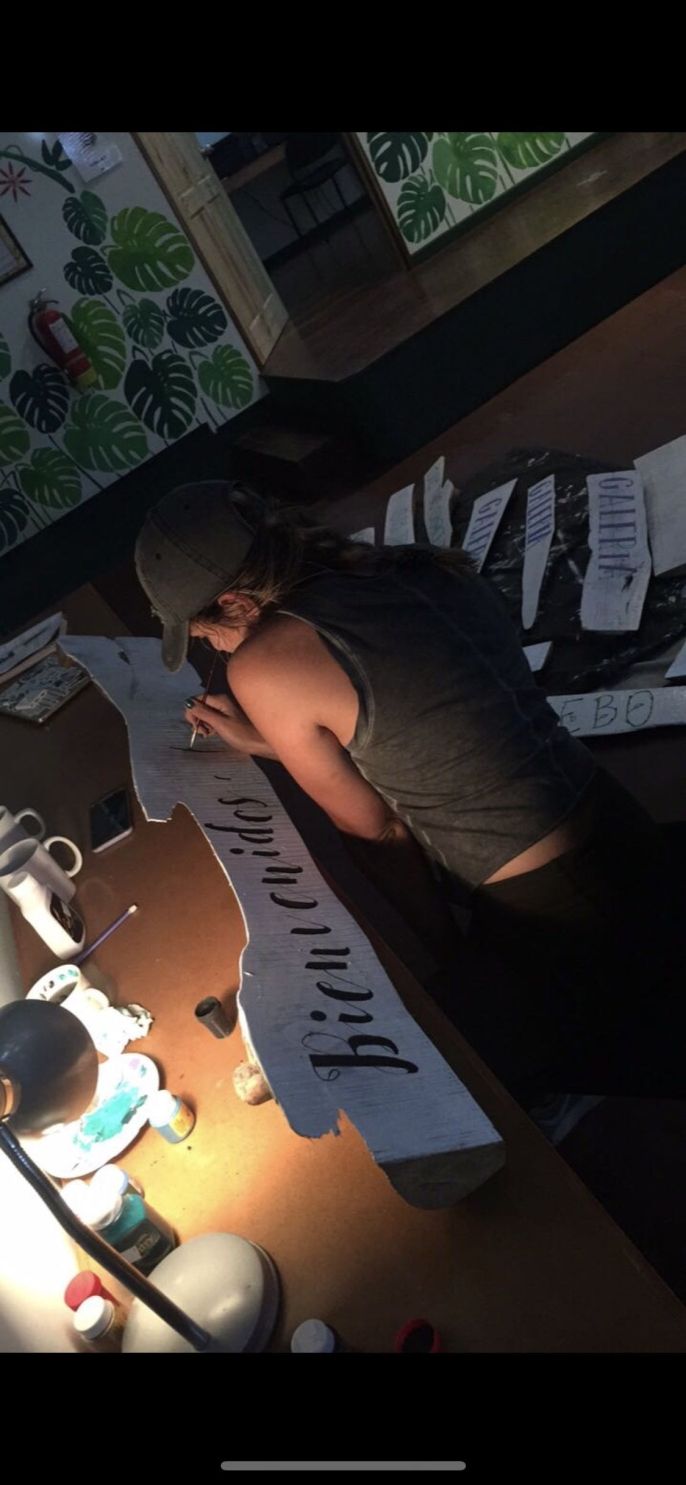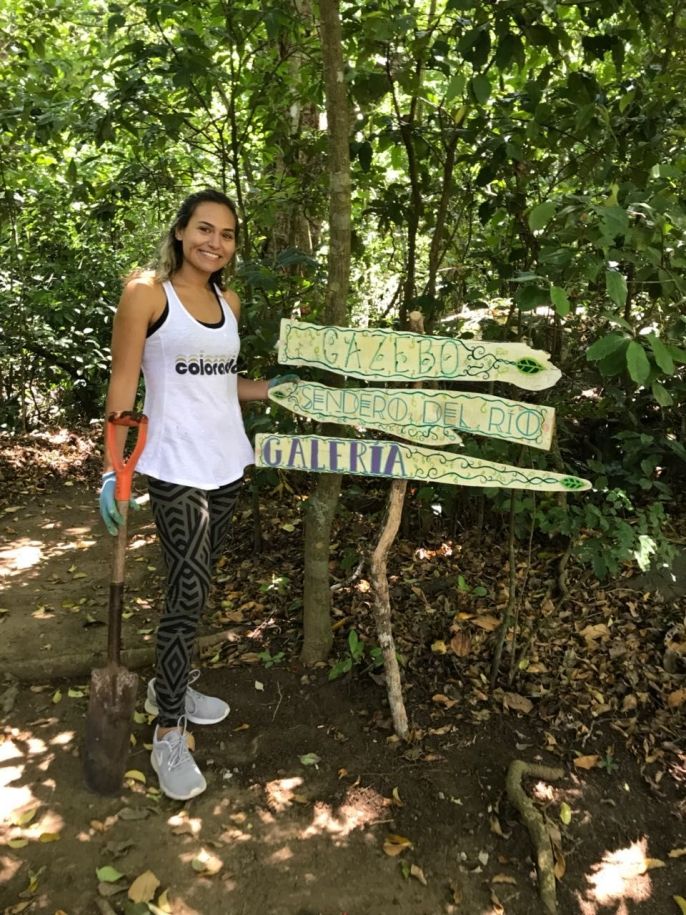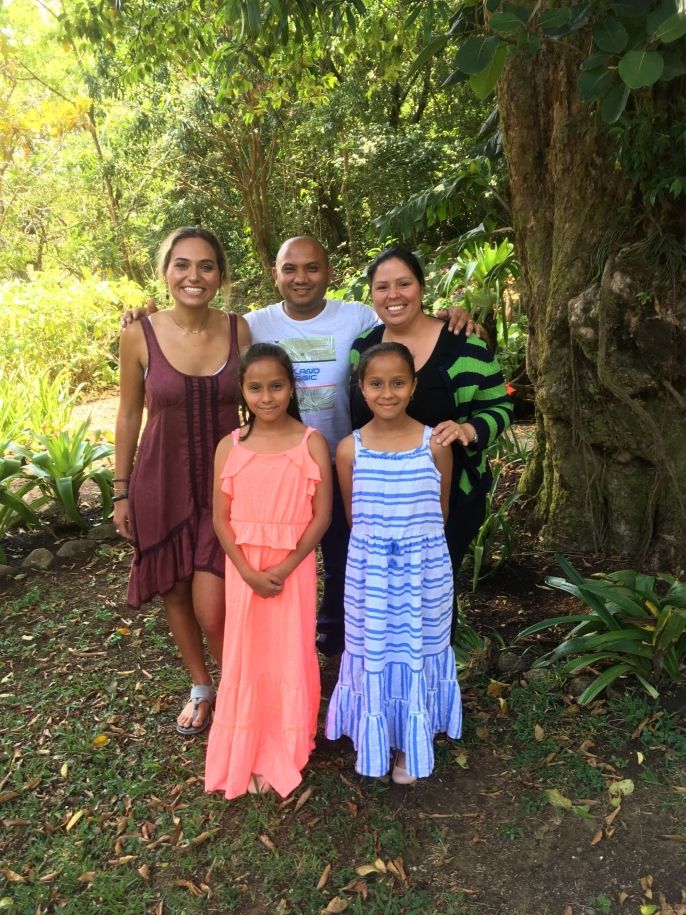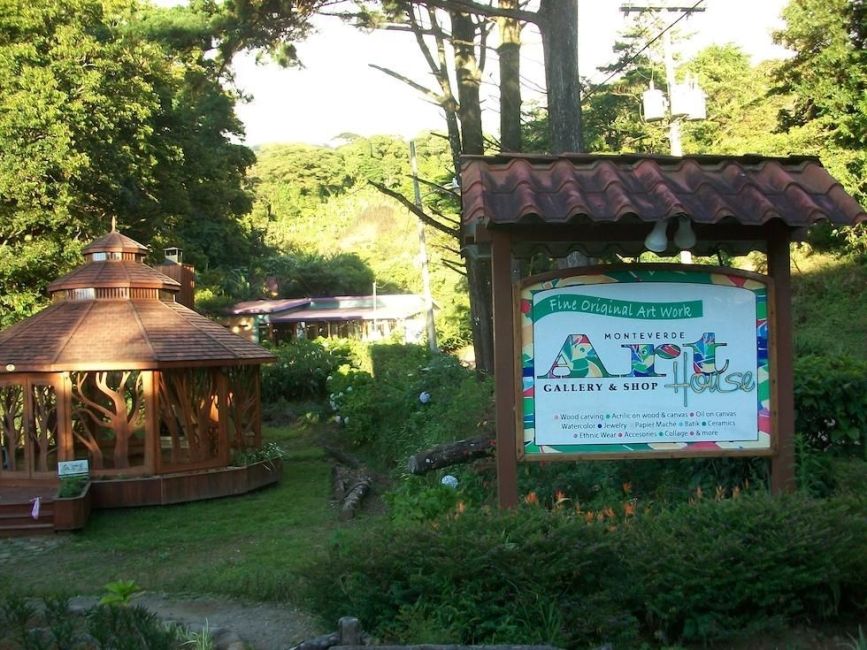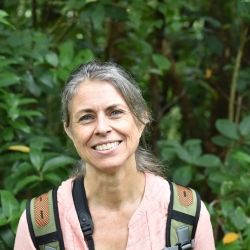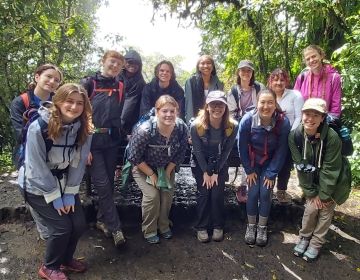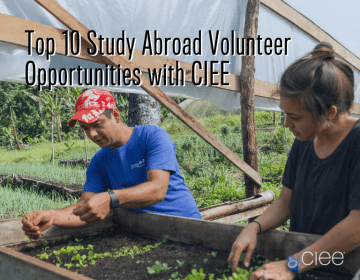"Sustainable Hardscaping for the Monteverde Art House," by Zehra Cheatham (University of Colorado Boulder): Sustainability and the Environment Internship
This past month I interned for Felipe Negrini, a Monteverde resident dedicated to increasing sustainable landscaping and hardscaping in the local community. We allocated the internship to helping the Monteverde Art House (M.A.H.), a locally owned private business that promotes local artists and artisans. In October of 2017, Tropical Storm Nate severely damaged the signs, plants, and benches in front of the M.A.H. making it difficult to navigate through the area without feeling lost. The signs around the M.A.H. are supposed to help you navigate the various paths to the gallery, gazebo, and river but since the storm, they have been destroyed and misplaced. Felipe and I did a site analysis of the area to determine what I can do in just a month’s worth of work that will benefit M.A.H. in a sustainable manner and acknowledged that reconstructing the signage around the area was reasonable. The ultimate goal was to offset negative environmental impacts by strategically using sustainable hardscaping practices by utilizing reused materials for aesthetically pleasing signs that are durable enough to be resilient to harsh weather conditions.
I am a Junior at the University of Colorado at Boulder majoring in Environmental Studies and Geography. I have an interest in pursuing a career in sustainable development and this internship gave me direct insight in this field of study. In every workplace there’s always room to be more sustainable because some people don’t realize the negative environmental effects they’re causing. I would like to educate people about sustainable measures they can take in order to mitigate negative effects and decrease their carbon footprint. This internship guided me in all of the right steps to achieving sustainability in a workplace we all mutually share but sometimes take advantage of, the great outdoors. I was lucky enough to be able to work outside every day and solve a problem with using only reusable materials to benefit the local community.
Before starting this internship I had some background experience with hardscaping but what I learned from Felipe overpowers everything I knew before this internship. Sustainable hardscaping begins with an appropriate design that includes functional, cost-efficient, visually pleasing, and environmentally friendly materials as well as an easily maintainable area. To determine all these factors, it was important to analyze the geography of where the M.A.H. is located and understand the native flora and fauna to gain perspective. I sat in solitude at the M.A.H. and observed the birds, flowers, and plants in the area. Then Felipe and I created a site analysis to pinpoint the exact locations the signs needed to be placed in order for people to properly be guided around the area. I couldn’t have asked for a better mentor than Felipe. Felipe knew all the ins and outs for making these signs as sustainable and resourceful as possible. We gathered wood from a local junkyard and he instructed me on how to saw them down to the exact measurements needed for the project. The next step was to sand down every piece and start designing them. Designing every sign was my favorite part of the process because I was able to be creative while creating a functional product for others to use. There were some limitations but through trial and error I successfully designed, constructed, and installed every sign.
The greatest contribution that I was able to give from this internship was a bond between humans and nature without harming nature’s natural beauty and enterprise. The nature paths in front of the M.A.H. provide an opportunity for members of not only the community, but tourists to explore the pure joy of Monteverde’s natural beauty. Now, anyone who enters the M.A.H. area can navigate properly and enjoy the scenery.
Related Posts
Happy Earth Day: Today and Every Day
Happy Earth Day! Every April 22, this global event comes around to remind us how precious our planet is, what sustainable efforts we can make to protect Earth, and that... keep reading
Top 10 Study Abroad Volunteer Opportunities with CIEE
Have you ever wondered if you could volunteer abroad? Perhaps you're looking into study abroad programs that provide international volunteer opportunities. If you’re itching to study abroad and truly make... keep reading
Recycling Internship with ADI San Luis
Written by Maya Peske (Cornell College), Internship in Sustainability and the Environment The road from San Luis up to Monteverde is well known by all of the people in the... keep reading
